 Bomber Command
Bomber Command  |
Aircrew Chronicles
|
Aircrew Losses
|
Nose Art
|
BCATP
|
Lancaster
|
Media
|
Aircrew Chronicles
|
Aircrew Losses
|
Nose Art
|
BCATP
|
Lancaster
|
Media
 Bomber Command
Bomber Command  |
Aircrew Chronicles
|
Aircrew Losses
|
Nose Art
|
BCATP
|
Lancaster
|
Media
|
Aircrew Chronicles
|
Aircrew Losses
|
Nose Art
|
BCATP
|
Lancaster
|
Media
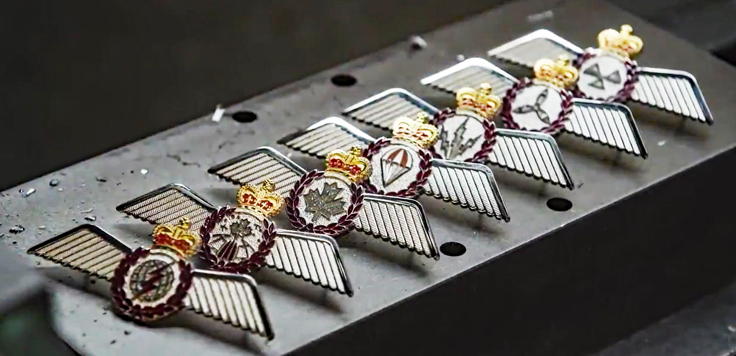
|
During 2017, the Bomber Command Museum of Canada presented Lt. Gen. Mike Hood, commander of the RCAF, with eight aluminum ingots formed from the skin of Halifax LW682. The plan was to incorporate this special, historic material into the wings worn by Royal Canadian Air Force personnel with flying qualifications. 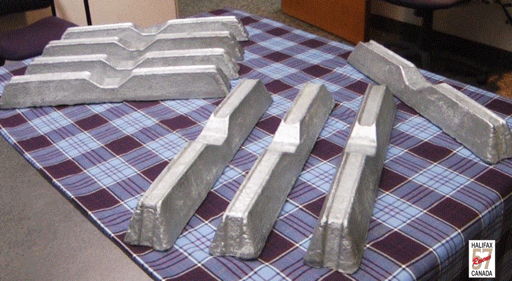 Eight Aluminum Ingots were presented to the RCAF by the museum. |
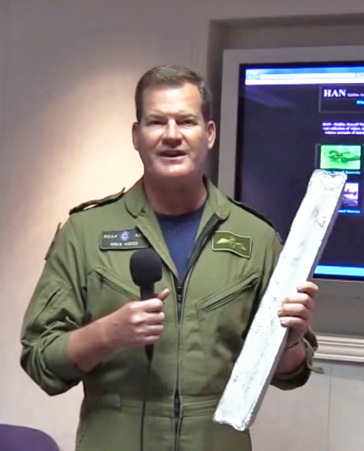 |
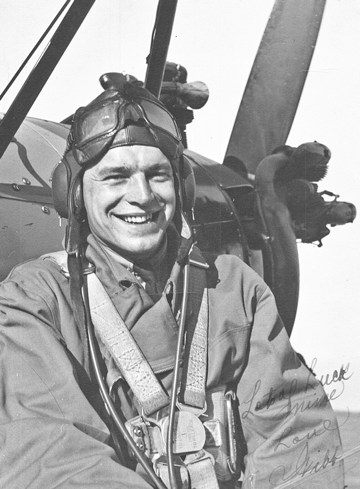 |
The story of this very special aluminum began in 1944 when F/O Wilbur Bentz's 426 Squadron RCAF Halifax was shot down, forgotten for fifty years, and then recovered in 1997. The aluminum from the aircraft was acquired by the Bomber Command Museum of Canada. In 2012 much of the aluminum became the ceiling of the Bomber Command Memorial in London. It has now been integrated into the wings worn by RCAF personnel with flying qualifications. P/O Wilbur 'Wib' Bentz was born in North Bend, B.C. and received his wings at Brantford, Ontario in April 1943. On the evening of 12 May 1944, P/O Bentz piloted 426 Squadron RCAF Halifax LW682 (OW-M) on a raid to Leuven, Belgium. The aircraft was attacked by a Messerschmitt Bf-110 flown by Luftwaffe ace, Martin Drewes. It crashed into a marsh and exploded, killing all eight aboard. Because of the boggy ground, very little from the aircraft could be recovered and only five bodies were located. Within 24 hours the remains of the aircraft's other crewmembers sank into the marsh together with Halifax LW682. |
|
After coming across his uncle's letters, P/O Bentz's nephew, Jay Hammond, visited the site and realized that his uncle's remains were right below his feet. Under the sponsorship of 426 Squadron Association, Canada's Halifax 57 Rescue Association, recovered Halifax LW682 with the assistance of the Belgian Aviation History Association. The team recovered the remains of the three Canadians that were still in the aircraft, P/O Bentz, Sgt. J.W. Summerhayes, and Sgt. F. Roach. Their families attended the burial of the airmen who were interred next to their five crewmates. The recovered aircraft parts were transported to Canada and some were used in the restoration of Halifax NA337 now on display at Trenton, Ontario. The unused aluminum was melted and formed into ingots. The ingots were acquired by the Bomber Command Museum of Canada and placed in storage to be used for memorial purposes. 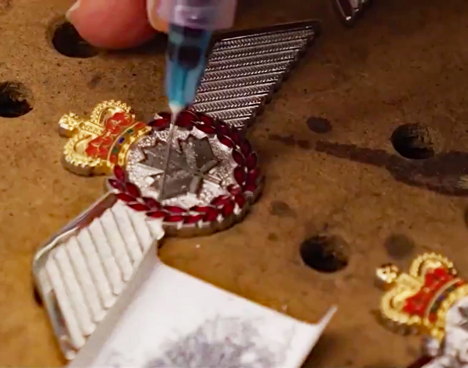 Inserting Halifax Aluminum into an RCAF Pilot's Wings badge. |
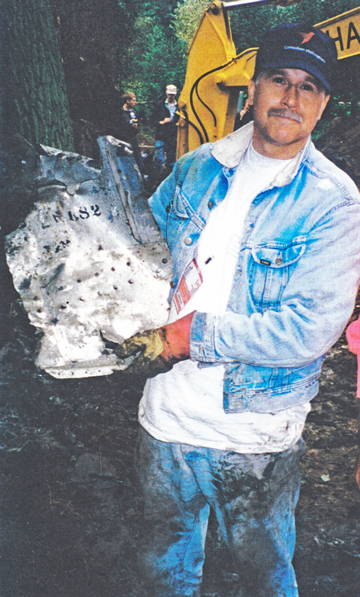 |